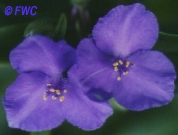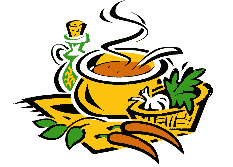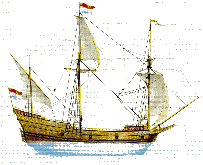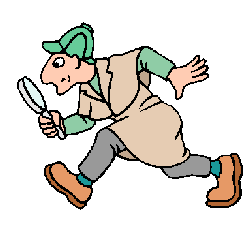|
[Front Page] [Features] [Departments] [SGAP Home Page] [Subscribe]

Net Watch...choice selections on the 'net

"Net Watch" aims to report those sites that you, as a grower, propagator or appreciator of Australian plants, might find interesting. Most of them relate to Australian issues of a horticultural, botanical or conservation nature but a few are of more general interest. A couple of other sites are "thrown in" for no other reason than that they redefine the term "bizarre". If you know of a site that fits into these general categories, please let us know.

The Living World
  NSW National Parks and Wildlife Service NSW National Parks and Wildlife Service
The NPWS is responsible for National Parks, Nature Reserves, Historic Sites and State Recreation Areas in New South Wales. This site offers offers information on many aspects of the Service's responsibility including a developing series of Fact Sheets on Plants and Animals. At present the fact sheets on offer are:
- Wollemi Pine
- Koalas
- Osprey
- Tiger Quoll
Particularly useful for those doing research are the species lists (animals and birds) for National Parks , Nature Reserves and Historic Sites. These are generated while you wait from the Atlas of NSW Wildlife database. The output lists each species, its conservation status and the number of sightings in the database. It also includes pest species recorded. For example, my request for species in the Wollemi National Park produced 27 mammals, 40 reptiles, 16 amphibians, 144 birds and 9 feral species.

  All Sorts of "ologies...." All Sorts of "ologies...."
The collections held at the Australian Museum include extensive examples of natural history, mainly from eastern Australia but there are also significant representations from other areas of Australia, the south-west Pacific and from other parts of the World. The collections cover anthropology, ornithology, palaeontology, mammalogy and many other "ologies"! Introductions to each of the collections are presented and, although brief, are well worth a look. For example, the mammalogy collection has photographs of preserved specimens of Tasmanian Tigers.

The site is an introduction to these collections and to current exhibitions and displays. The site is a little difficult to navigate in that it's not always obvious where to look for particular items of interest. Fortunately there is a search facility so the easiest approach, if you can't find what you're looking for, is to use it directly. The search option gives the choice of searching just the Museum's site or more widely on the web.
Many of the Museum's "Search and Discover Information Leaflets" are available online so, if you want to know about cicadas, bluebottles, leeches, all sorts of spiders, cane toads, fossils, blue-tongued lizards.....and many others, this is the place to go.

  Tree Facts Tree Facts

This is one of those sites that you come across by accident and wonder how you missed it before. In short....it's a gem!
It's been put together by the Queensland Department of Natural Resources and consists of over 50 fact sheets on all sorts of topics to do with growing, propagating managing and selecting native plants. The fact sheets are grouped into 6 categories:
- Propagating Trees
- Tree Uses
- Tree Management
- Tree Establishment
- Tree Selection
- Tree Information
I still haven't had time to explore all of the sheets on offer but there are excellent guides to "Establishing a rainforest garden", "Trees attractive to birds" and "Using fire-retardant plants for fire protection". If the rest are as good as these, they will be worth exploring.
All of the sheets are in Adobe Acrobat format so you will need the Acrobat Reader to view the files. You can download a copy from Adobe's web site or, if you want to avoid the download time, Windows users will find the Reader on the cover CD from any recent issue of the magazine PC@uthority at your local newsagent.

  Virginia Native Plant Society Virginia Native Plant Society
The Virginia Native Plant Society (VNPS) was founded in 1982 and has approximately 1500 members. Its purpose is to further appreciation and conservation of Virginia's native plants and habitats. The Society's programs include:
- An Alien Invasive Plant Project.
- Selection of a Native Plant of the Year.
- A Registry of Natural Areas
- Preparation of a list of nurseries which supply native plants and a list of publications/guides for plant identification
- Sponsorship of seminars, workshops, field trips and plant sales.
 
Spiderwort (Tradescantia virginiana), a native plant of Virginia. The flowers are very similar in appearance and colour to Australian species in the genus Commelina. Both genera belong to the same family, the Commelinaceae.
Photo: Virginia Native Plant Society
The site includes a selection of photographs and descriptions of Virginian native plants and a detailed list of invasive plants, some with fact sheets on habitat, distribution, threat and methods of control. It's pleasing to note that no Australian species are listed as weeds (pity that's not the case in Florida!)
This site is interesting for many reasons not the least of which is that it allows people involved in native plant conservation in Australia to see what is being done by people with similar motives elsewhere.

  Renaissance Herbs Renaissance Herbs
Are herbs a mystery to you? They are to me.
I know the basics....garlic, basil, oregano, thyme, etc but what are all of those other varieties that seem to take up a whole wall at the supermarket?
 
Well, if you're as mystified as me, the Renaissance Herbs site will make everything clear. There are descriptions and uses of around 150 herb varieties. Learn about the delights of catmint, cilantro, dogbane, mizuma, skullcap and wormwood.....as well as all of the more common types. You'll also find useful tips on growing herbs, herb suites (groups of herbs with common characteristics), companion planting for pest control and home made herbal sprays for pest control.
There is also a small selection of Australian native herbs which includes:
- Native basil
- Native parsley
- Native peppermint
- Native violet
- Warrigal greens
No Plants...But Worth Checking!
  Doctor please....some more of these! Doctor please....some more of these!
You've just come home from the doctor. You feel as sick as a pickled parrot. You've got packs of red pills for the headache, blue capsules to stop the shakes, a white emulsion (with a smell like rotting wombat berries) to stop the trots and yellow pills for a reason even the doctor wasn't game to tell you......
 
Do you ever wonder just what the different medications are really for? Did you forget if the doctor told you to take the red pills before the blue ones (or vice versa)? You just know that if you take the emulsion at the wrong time it will kill you.....
Well....help is at hand. The Australian Guide to Medications is a comprehensive listing of about 2000 prescription drugs which tells you:
- What the drug does
- How it works
- Usual dosage
- Side effects
- Interactions with other drugs
- Possible complications for breast feeding and pregnancy
- Other features
I checked it out for Prozac (no special reason....) and found that the way the drug works is not known! Sounds like an opportunity for endless research!

  Duyfken Replica Duyfken Replica
In 1606 the Dutch East India Company sent the ship Duyfken (the "Little Dove") to search for commercial prospects in lands south of Indonesia, the limit of the then known world. Captained by Willem Janszoon (or Jansz), the ship reached and charted 300 km of the western coast of Cape York Peninsula. Janszoon and his crew thus became the first known Europeans to sight the Australian mainland. They were also the first Europeans to make contact with the Australian Aborigines....one of the crewmen was killed in an encounter near the present Port Musgrave
 
This was 164 years before James Cook in the Endeavour discovered the east coast of Australia in 1770. Why is it, then that few Australians know of Janszoon and the Duyfken? It's probably because the Dutch didn't regard the discovery as having commercial value and it was the English who colonised the country in 1788.
The Duyfken replica project may go some way to making the earlier discovery more widely known. After the replica is launched later in 1998, visits are planned to Australian ports and a re-enactment of the voyage from the Netherlands to Indonesia and north Australia is also being considered. The replica will be in Sydney for the Olympic Games in 2000.
The site includes a section where the progress of construction can be monitored, including photos of the ship, and a series of virtual reality panoramas that take the viewer inside the vessel. These require the Quick Time Virtual Reality (QTVR) plugin which can be downloaded from a link on the site. Somewhat less "high tech" is a downloadable plan for the construction of a cardboard replica of the....um, replica. Might keep the kids amused on a wet winter's Sunday!
There is also a Duyfken Shop where you can buy a range of souvenirs.
Over the Top!
  Give this a "Butcher's" Give this a "Butcher's"
Fair dinkum....there I was drivin' around the Back of Beyond when I came across this old digger on Shank's pony and, except for the jumbuck over his shoulder, all on 'is Pat Malone.
"Ow-yar-goin yer old bastard", he said. "Not a bad soundin' donk in the ute."
I chucked a uwe and stopped. "It's built like a brick shit house", I said, "But you look a bit crook....."
"Yeah", he replied, "Me old mutt got run over yesterday arvo; bloody wanker knocked him arse over tit into the Never Never and he's just carked it. ....".
I could go on but that's probably more than enough!
Slang....it's what makes nations different. It's my belief that there should be a United Nations' statute that bans the residents of one nation from appropriating the slang terms of another.
Larry's Aussie Slang and Phrase Dictionary isn't a bad introduction to the Aussie vernacular. In fact, on reading through the definitions it's surprising how few are unfamiliar! At least to an Australian. However, it's easy to take issue with some terms:
- Zit; Surely of American origin
- Hang out; ditto
- Cupper-nuser; Supposedly to "have another cup of tea"......must be fairly localised in use
- Pie-floater; Defined as "a meat pie floating in pea soup (mash)" which is probably fair enough but it is not, repeat NOT, "traditional Aussie tucker"
- "Mutt"; defined as a "dog that is a bitser" but "bitser" isn't defined
- Scallops; Supposedly means "fried potato cakes' only in Queensland...this will come as a surprise to the many people south of the border who regularly feast on these "delicacies"
The page is just that; one page of around 90k. It would be more accessible if broken down into smaller bits and it could also do with some proof reading....it's littered with grammatical, spelling and other mistakes and lacks consistency in presentation of the definitions:
- "Things are crock in Musselbrook" - perhaps they are, but most people will think they're "crook".
- "Chock a brown dog". To stop a car rolling, perhaps? "Choke" is probably what's meant.
- "Nacked" as a term for "annoyed". Maybe "Narked"?
However, the page is certainly worth a look. Particularly for all of you Victorians and New South Welshpersons who probably didn't know that you are "Gumsuckers" and "Cockroaches" respectively!

  On the Case..... On the Case.....
There's nothing like a good "who-dun-it" and, while the mysteries at The Case.com aren't quite in the Tony Hillerman/Reginald Hill/Colin Dexter class, they're ideal for the internet as a medium. The mysteries are short, diverse and a lot of fun!
TheCase.com features three mysteries:
- The Monday "Solve-it", a professionally written solve-it-yourself mystery every week. Clues are given at the website and the solution is available each Thursday.
- The Wednesday "Twist"; Start the day with a mini-mystery with a surprise ending.
- The Friday "Flash", a mini-mystery written by readers about the Mysterious Photo which appears on the website each second Friday.
You can sign up free to receive the weekly Solve-it mystery via email.
|

|
The Case is part of MysteryNet.Com which caters for mystery-related entertainment and information for casual fans and die-hard enthusiasts. MysteryNet.com has more than 40,000 registered members.

[Front Page] [Features] [Departments] [SGAP Home Page] [Subscribe]
Australian Plants online - June 1998
The Society for Growing Australian Plants
|